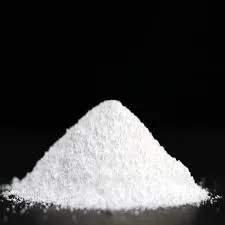Ornithine L-Aspartate in the Treatment of Hepatic Encephalopathy
Hepatic encephalopathy (HE) is a complex neurocognitive disorder that arises as a consequence of liver failure, characterized by a spectrum of neurological and psychiatric symptoms. The condition primarily occurs due to the accumulation of toxic substances in the blood that are normally cleared by the liver, notably ammonia. As the liver fails to process these substances efficiently, they cross the blood-brain barrier and induce neurotoxicity, leading to alterations in mental status, confusion, and even coma in severe cases.
Among various treatment strategies for managing HE, ornithine L-aspartate (OLA) has emerged as a notable therapeutic agent. OLA is a compound formed from the amino acids ornithine and aspartate, and its role in HE management has generated considerable interest due to its potential to reduce blood ammonia levels and improve neurological function.
Mechanism of Action
The therapeutic efficacy of ornithine L-aspartate primarily hinges on its ability to facilitate ammonia detoxification. Once administered, OLA is metabolized in the liver, where it acts through a series of biochemical pathways that ultimately lead to enhanced urea synthesis and excretion. Ornithine, a key constituent of OLA, serves as a substrate in the urea cycle, promoting the conversion of ammonia to urea, a less toxic compound that can be safely excreted in urine. Aspartate, on the other hand, stimulates the synthesis of certain neurotransmitters and contributes to the overall metabolic balance within the brain.
Further, OLA appears to have neuroprotective properties, helping to stabilize the neuronal environment and mitigate the harmful effects of ammonia on brain function. Studies have shown that OLA may enhance cerebral energy metabolism and reduce oxidative stress, contributing to improved cognitive function in patients with HE.
Clinical Efficacy and Safety
l ornithine l aspartate for hepatic encephalopathy

A number of clinical trials have evaluated the efficacy of ornithine L-aspartate in treating HE. Research indicates that OLA can significantly reduce blood ammonia levels within a relatively short time frame. Patients receiving OLA have demonstrated improvements in neurological symptoms, often reverting to a higher level of cognitive function compared to those receiving standard therapies.
One noteworthy trial published in the *American Journal of Gastroenterology* concluded that OLA therapy led to a more pronounced improvement in hepatic encephalopathy symptoms compared to traditional treatments, such as lactulose. The findings suggest that OLA not only helps in the acute management of HE but also contributes to preventing recurrence in patients with chronic liver disease.
Regarding safety, ornithine L-aspartate has been generally well-tolerated by patients. Side effects, when they do occur, tend to be mild and may include gastrointestinal disturbances such as nausea or diarrhea. Importantly, OLA presents a favorable safety profile compared to some other HE treatments which can result in more severe adverse effects.
Conclusion
Ornithine L-aspartate represents a promising therapeutic option for patients suffering from hepatic encephalopathy. Its dual action of enhancing ammonia detoxification while offering neuroprotective effects positions it as a beneficial adjunct to traditional HE management strategies. As ongoing research continues to refine our understanding of HE and its treatment paradigms, ornithine L-aspartate could play a critical role in improving the quality of life for patients with liver dysfunction.
In summary, by targeting one of the core pathophysiological mechanisms of HE, OLA not only alleviates symptoms but may also enrich the overall therapeutic landscape for managing this challenging condition. As healthcare providers and researchers look towards more effective treatments for hepatic encephalopathy, ornithine L-aspartate stands out as a valuable tool in the fight against this debilitating complication of liver disease.

